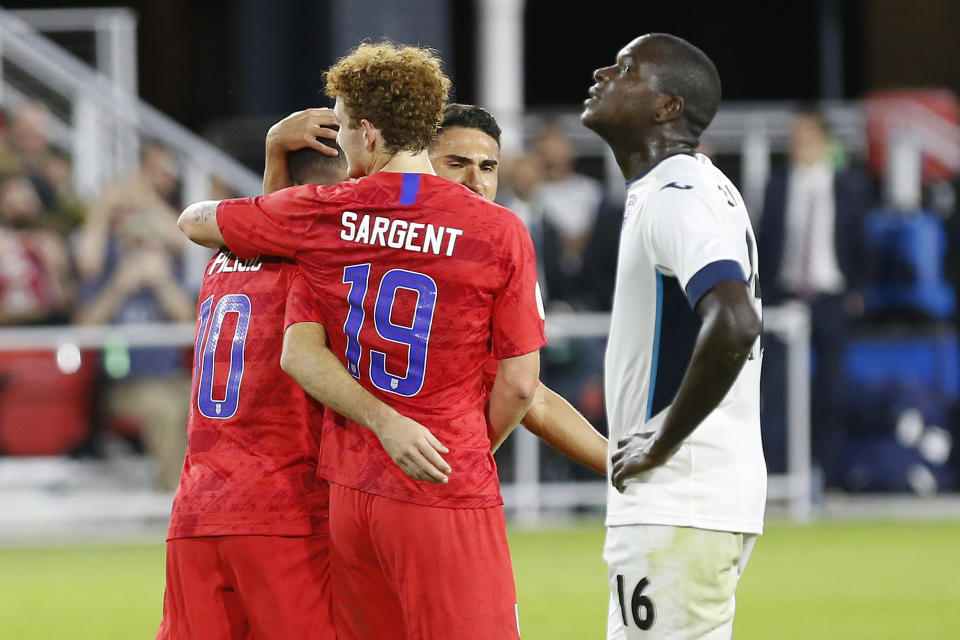The CONCACAF Nations League is a waste of time for the USMNT and everybody else
And so it only took one game of United States men’s national team involvement to confirm what we already knew: the CONCACAF Nations League is a waste of time.
In theory, there’s a fairly sensible justification for this new tournament, played over the course of about 10 months in order to crown a champion of North and Central America and the Caribbean. Well, another, champion, since the CONCACAF Gold Cup already designates a champion every other summer. By playing competitive games during the international windows when friendlies would have otherwise been played, the worth of those games is raised, both in a sporting and monetary sense.
Or that’s the thinking, anyway.
The idea is copied from Europe, where the UEFA Nations League – in spite of criticism that soccer hardly needed another competition, and that there was too much strain on the players as it is – has been a success. But the early evidence suggests that it just doesn’t work here.

What makes the Nations League fun in Europe is that by splitting the confederation’s 55 teams into four divisions, initially according to their ranking, the competitiveness of the games increases. Good teams play other good ones; the bad teams play fellow bad ones. And at the end of it all, the best teams in every division are promoted up a rung and the worst drop down a level.
This solves a problem. Over in the UEFA region, World Cup and Euro qualifying pits the top teams against a lot of very bad ones, leading to blowouts that don’t benefit anybody – the minnows or the big fish. By creating a construct to divvy the nations up by their respective levels, you get more appealing and useful games. That’s why the UEFA Nations League makes for a valuable addition to the international game.
The CONCACAF Nations League, however, doesn’t solve a problem. It creates one.
This region already separated its elite teams from the rest in competition. Only 16 of 41 member nations partook in the 2019 Gold Cup, up from 12 in previous editions. A dozen teams reach the penultimate round of World Cup qualifiers in CONCACAF, when the big nations like the United States, Mexico, Costa Rica and Honduras typically enter the fray. A mere six of those reach the final round.
The big nations, in a soccer terms, very rarely face the small ones in competition. But now they will. So all the Nations League does is create more potential mismatches in competitive games.
Which is how you wind up, of course, with Friday’s 7-0 USMNT walloping of Cuba – with six goals before halftime, whereupon the Americans eased up a tad.
They looked happy to get a few goals after a three-game run without a win. And then they looked bored and unchallenged. The Cubans looked wholly overmatched and demotivated. Meanwhile, the national team drew significantly fewer people than the home team D.C. United typically does, suggesting the people of Washington, D.C. weren’t particularly bothered, either.
[ Follow Yahoo Soccer on Twitter and Facebook ]
This whole thing is all supposed to be for the benefit of the smaller nations and their progress, and there’s something to be said for that. But conversely, these games are detrimental to the top teams, who can no longer schedule an opponent at their own level for a friendly on that day – which had already been made harder by the obligations of European teams in their own Nations League.
Yet it’s tough to see how Cuba benefited, exactly, from Friday’s affair. Or how it benefited from its 6-0 loss at the hands of Canada in its opener on Sep. 7. If the gulf between teams in the A-division is that big, the divisions are simply too large. Where is the upside, for either team, in Mexico playing Bermuda home and away? Only the thin sliver of not-quite-CONCACAF-elite teams, like Canada and Jamaica, might find this exercise useful.
But that’s a lot of games for the benefit of very few. So on the whole, these matches don’t have much added value over friendlies. Especially when you consider that the teams in the two lower divisions play each other all the time in the early rounds of Gold Cup and World Cup qualifying, where they’re already separated by ranking. Which, again, means nothing is gained from the Nations League.
Sure, those bad teams will fall away after the group stage. At the Nations League Final Championship in June, the four best performers will be left standing. But the Americans will probably just face Mexico, Costa Rica and Honduras again, or most of them, anyway.
In that sense, the grand finale will simply resemble World Cup qualifying or the Gold Cup again. And those teams already eliminated, whom all this is for, won’t be participating.
What, then, was the point again?
Leander Schaerlaeckens is a Yahoo Sports soccer columnist and a sports communication lecturer at Marist College. Follow him on Twitter @LeanderAlphabet.
More from Yahoo Sports:

 Yahoo Lifestyle
Yahoo Lifestyle 

